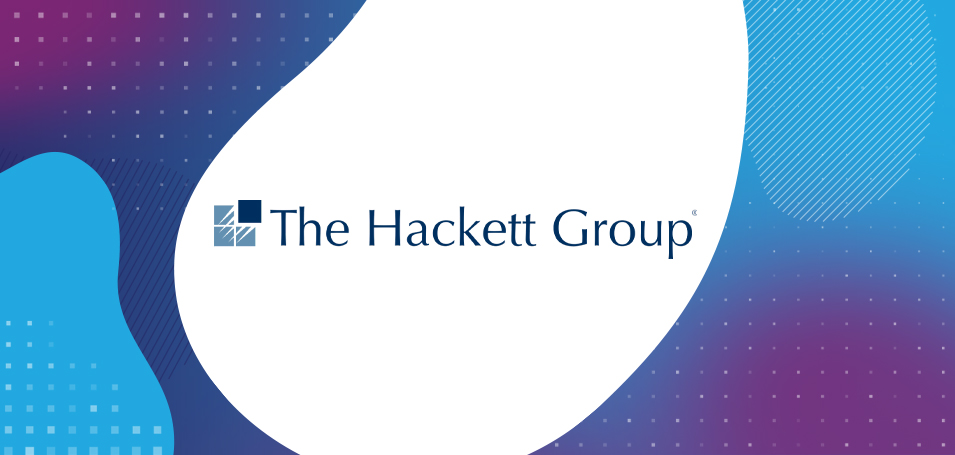Our 2022 State of Customer Education report was packed to the rafters with interesting and powerful insights about the industry. To discuss the gains that customer education teams can attain as they grow in maturity, we put together an all-star webinar panel.
Thought Industries’ Senior Learning Strategist, Tyler Foster was joined by Brian Childs, VP Product Marketing, Daniel Quick, SVP Content Strategy, as well as Shopify’s Merchant Education Lead – Imtiaz Alam. If you missed the event, keep on reading for some of the most impactful findings from the report, and their implications for the customer education industry as a whole.
And, for an exclusive replay of this State of Customer Education 2022 webinar, register here!
Enterprise Education Contributes to Success Across the Customer Lifecycle
Tyler opened up the conversation by looking at some of the growth metrics today’s customer education teams are impacting across their companies, in areas such as demand generation, sales, onboarding and renewal.
Of course, the economy has shifted over the past few months, and that can’t help but cause some negative effects. Imtiaz commented that factors such as interest rates, inflation, and broken supply chains have definitely had an impact.
“As things have shifted and may continue to shift, companies may need to face headcount reduction and priority changes coming from leadership. As a customer education team, parts of your tech stack may be questioned, you might need to hold up against outside pressures, and it’s important to be ready for these macro changes,” said Alam.
Daniel jumped in to ask a great question that you can use when budgets are tight: “What can you do to scale the resources you already have? You might not be able to add capacity or headcount, but are there strategies you can put in place to make value out of what you have? Think about ideas such as repurposing content, repackaging it, or finding new opportunities to distribute on new channels.”
Attributing Big Impact to Customer Education
“You don’t get 15-20% results by accident.”
We loved hearing Brian discuss the positivity of the numbers uncovered in the report, and being intentional about growing customer education programs, even during an economic downturn. There are always going to be inefficiencies you can target, especially in the SaaS world, and you can often make efficiency gains by streamlining the way you work, particularly in a cross-functional part of the business like customer education.
Brian also brought up the huge ‘build back better’ story that’s happening now. “When you’re building out your budget for 2023, you have an opportunity to ask, how can we build our teams better to achieve the scale we need?” Contract resources is one good idea, where freelancers can be leveraged to fill in the gaps and limit the number of full-time employees. “We’re at this real inflection point, and customer education programs have become established enough to start asking, what are the best practices we can lean on to make changes?” Brian pointed listeners towards the Thought Industries’ Maturity Model to help with this kind of journey.
Choosing the Right KPIs to Demonstrate Success
“Ask yourself, what are the key features that really map to your organization’s priorities?”
Brian continued by discussing the best practices for understanding LTV, which he described as the metric that stands out for him the most when looking at what teams are measuring today. Diving into this KPI is really important, helping to understand the differences between a user who stays and a user who churns.
Imtiaz also gave his opinions on measurements and KPIs informed by the large spectrum of customers on Shopify’s platform.
Bottom line? If during an economic downturn, you can find ways to prove that education is keeping customers around longer and causing product stickiness, you’re in a good place.
Daniel discussed what a lean Customer Education team can do, where there might be only one or two people working to develop a customer education strategy, and they can’t cast a wide net. “Understand what the executive team is really focused on right now, and make sure that the work that you do can advance the objective the organization is chasing.”
Often in SaaS, this will be deflecting support tickets through self-serve so that Customer Support teams can scale without adding headcount, or supporting onboarding to reduce churn. “Start with an 80/20 rule, making sure you have the resources in place to address 80% of what your customers need to know, with 20% of the resources.”
Higher Program Maturity Means Bigger Results
We can see from the numbers in the report that as teams mature, their customer education has a greater impact on the business. For example, high maturity teams see a 38% increase in brand champions compared to 14% in low maturity teams, and high maturity teams see a 35% increase in brand awareness, compared to 16%.
Don’t forget! Low maturity is not a negative term, and these are all great numbers that show that doing the work always makes a difference. However, there’s no doubt that the more mature your CE function, the better results you’re going to see.
There’s a fascinating social element of education today that shouldn’t be ignored. People want to learn, and that’s why so much of Instagram and TikTok is based around showing people how to do something, teaching them things in an accessible way.
Imtiaz discussed the social-media specific courses Shopify is working on now to teach to this audience who are learning on these channels. “When you’re thinking about brand awareness and brand champions, you’ve got people who are leaving jobs and looking to enter new industries, and they aren’t jumping straight into feature adoption, they need earlier content that is product agnostic and starts earlier in the flywheel with brand awareness and an overall awareness of the industry.”
We love how Daniel brought this home, explaining that customer education teams are uniquely positioned to provide this kind of top of the funnel content to drive brand champions. They can usually create really good ground-breaking content on different channels, they understand your product and how customers see value with that product, and they also know a lot about the industry and its best practices.
Creating a Strategy for Building Brand Champions
Daniel gave a great description of a brand champion, someone who is not only actively using your product, but out there promoting your brand to others. They are leaving positive reviews on G2, they are sharing social media posts, and they’re talking about how awesome you are to their friends and communities! Companies who can attract brand champions can see great results, including reducing the cost of acquisition.
However, we laughed when he gave us all this firm reminder. “To build brand champions, you can’t just cross your fingers and say ‘I hope they like us’! You need to explicitly lay out a path, and create systems and levers and channels for them to advocate on your behalf.”
Daniel gave a few powerful ideas for allowing brand champions the space to support your organization, including:
- A referral program could provide incentives for them to spread the word
- A certification program could encourage users to master your product and then post about their ability on social media
- You can make them feel special by creating exclusive content, such as early notice of new features or brand champion events
- Ask them to contribute to your blog or join a webinar, and continue to look for ways to lift up their voices
Imtiaz added that using brand champions to create more use cases and content about their specific successes can really pack a punch. You get both your audience and also the brand champion’s audience and network, extending your reach.
Understanding Differences Between Learners
Moving onto the top obstacles in customer education today, the report identified 5 challenges. Developing relevant learning paths, improving instructional design, engaging SMEs for developing educational materials, communicating training value to the org, and calculating the value of training to learners.
One thing is clear, no Customer Education team is alone! We all experience similar challenges, and we’re all in this together. Brian shared some insights on measuring the value of education to learners. He pushed the audience to ask, “Does the dataset you’re using have relevance to what’s going on in your program? Learning paths can be used to segment your dataset so you can ensure when you’re measuring the outcomes, you’re measuring it against ‘like learners.’ The fidelity of your data is one of the most important things, or you’re going to struggle with garbage in – garbage out.”
Register for an exclusive replay of this webinar for more awesome insights, including:
- Imtiaz and Daniel discussing who to talk to when looking to build top-of-the-funnel content brand awareness strategy
- Brian on the impact of just-in-time learning on content for demand generation
- Tyler’s conversation around the top 5 goals for customer education teams in 2022
You can also download the full 2022 State of Customer Education report here.




